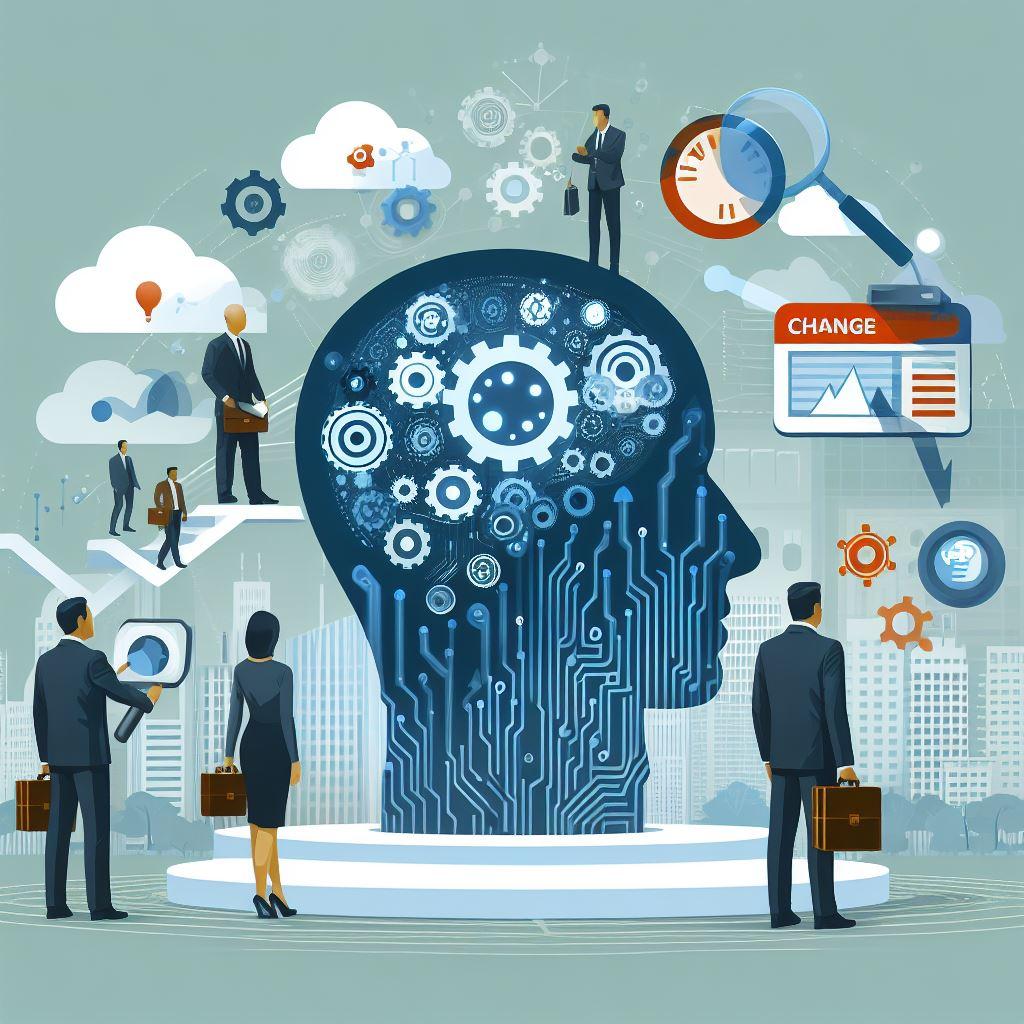For the future of change management, using digital platforms and technology stands out as a beacon of progress. Let’s delve deeper into the transformative power of these tools, specifically focusing on three pillars of innovation: AI (Artificial Intelligence), Machine Learning (ML), and Big Data analytics.
5 Aspects to Navigate the Future of Change Management
AI in Change Management: Unveiling Possibilities
Artificial Intelligence has become a cornerstone in predicting and managing the impact of change on business operations. Through sophisticated algorithms, AI not only anticipates potential challenges but also suggests strategic solutions. Imagine an AI-driven system that analyzes historical data, identifies patterns, and provides actionable insights, paving the way for informed decision-making in the change management process.
| AI Application | Functionality |
|---|---|
| Predictive Analytics | Forecasting the impact of change based on historical data |
| Intelligent Automation | Streamlining routine tasks, freeing up resources |
| Sentiment Analysis | Understanding employee sentiments during transitions |
Machine Learning: Adapting to Change Dynamically
Machine Learning takes the predictive capabilities of AI to the next level. By continuously learning from data patterns, ML algorithms adapt dynamically to changes in the organizational landscape. In the context of change management, this means enhanced accuracy in forecasting, enabling proactive measures to mitigate potential disruptions.
| ML Contribution | Impact |
|---|---|
| Adaptive Forecasting | Real-time adjustments based on evolving data patterns |
| Personalized Guidance | Tailoring change strategies to individual employee needs |
| Continuous Improvement | Iterative learning for refining change management tactics |
Big Data Analytics: Illuminating the Path Forward
Big data analytics serves as the backbone, processing vast amounts of information to extract meaningful insights. In change management, this translates to a comprehensive understanding of organizational dynamics, enabling leaders to make strategic decisions grounded in data-driven intelligence.

| Analytics Insight | Organizational Impact |
|---|---|
| Change Readiness Index | Assessing the organization’s preparedness for change |
| Employee Engagement | Monitoring and enhancing employee involvement in transitions |
| Continuous Improvement | Identifying areas for ongoing refinement in change strategies |
Integration of Technologies: Synergy for Seamless Change
The true power of AI, ML, and big data analytics unfolds when these technologies synergize within the fabric of change management processes. As organizations seamlessly integrate these tools into their operations, a transformative synergy emerges, fostering a culture of adaptability and innovation.
This integration goes beyond predictive capabilities. Imagine a scenario where AI-driven insights trigger automated workflows within collaborative platforms, aligning teams and resources dynamically to meet the evolving demands of change. Machine Learning, in this context, not only forecasts but orchestrates change initiatives, adapting in real-time based on the feedback loop generated by big data analytics.
| Integration Scenario | Impact |
|---|---|
| AI-ML Collaboration | Dynamic adaptation with predictive learning |
| Big Data-Driven Automation | Streamlining change processes with data-driven precision |
| Holistic Change Analytics | Comprehensive insights for continuous improvement |
User-Centric Approach: Empowering Employees
In the digital age, empowering employees with user-centric tools is paramount. The in-app guidance provided by digital adoption solutions becomes a linchpin, offering not just assistance but a personalized journey through change. This user-centric approach leverages AI and ML to tailor recommendations and support, ensuring that employees are not only equipped for change but also actively engaged in the process.
| User-Centric Feature | Employee Empowerment |
|---|---|
| Personalized Recommendations | Tailored guidance based on individual preferences |
| Gamified Learning Experiences | Enhancing engagement through interactive elements |
| Collaborative Decision-Making | Fostering a culture of participation and innovation |
Conclusion: Navigating the Future of Change Management
As we look to the future, the convergence of AI, ML, and big data analytics becomes a compass for navigating the complexities of change management. This isn’t just a technological evolution; it’s a paradigm shift in how organizations approach, adapt to, and thrive amidst change. The tables presented showcase the tangible impact of these technologies, but their true value lies in the holistic transformation they bring to the very core of organizational dynamics. As we embrace the possibilities of 2024 and beyond, the integration of these technologies marks not just a trend but a strategic imperative for organizations aspiring to be pioneers in change resilience.


